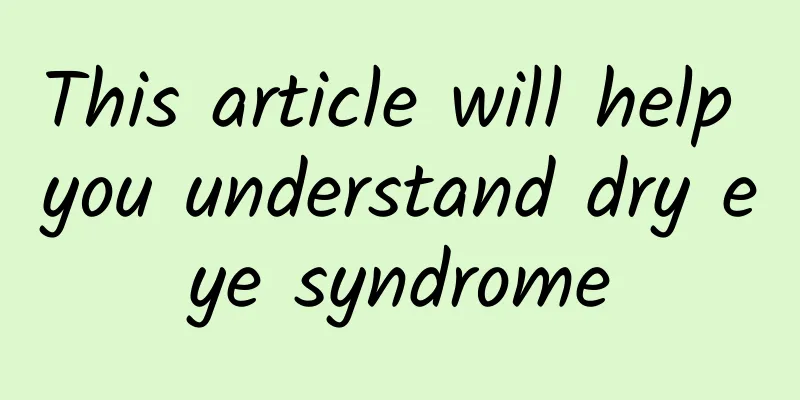Success rate of IVF for polycystic ovary syndrome

|
Polycystic ovary syndrome is a relatively common gynecological disease. When it occurs, it often leads to infertility in women and irregular menstruation. For married women, if they have polycystic ovary syndrome, it will seriously affect their physical health. At this time, if they want to have children, they should first treat polycystic ovary syndrome in time, and then consider assisted reproductive methods such as in vitro fertilization. Next, let’s take a look at the success rate of in vitro fertilization for polycystic ovary syndrome. Success rate of IVF for polycystic ovary syndrome We know that polycystic ovary is a complex endocrine and metabolic disorder common in women of childbearing age, and infertility is one of its manifestations. Polycystic ovary has many follicles and poor quality, which can be described as a "double-edged sword". As far as the current clinical situation is concerned, we all know that polycystic ovary can be solved and assisted pregnancy and childbirth can be achieved through in vitro fertilization, but it will indeed have a certain impact on the success rate. In addition, the success rate of overseas in vitro fertilization is not perfect, only 65% to 70%, so no matter from which aspect you consider it, there is still a certain chance of failure. I hope everyone understands this point. As for the success rate of IVF with polycystic ovary, the key still depends on the specific situation and the severity of polycystic ovary. The key to polycystic ovary is that there are many follicles but the quality is poor. Although we often hope to have a balance between quantity and quality, sometimes it is not satisfactory. That is to say, after inducing ovulation through in vitro fertilization, the number of eggs retrieved may be large, but the quality is poor, which means it is difficult to have certain dominant follicles, and the final embryo quality may not be optimal, which will affect the overall success rate to a certain extent. IVF conditions There are many women who are unable to conceive for some reason, but still want to be a mother. In this case, they can choose to have in vitro fertilization. Although IVF has helped many women realize their dreams of becoming mothers, it is not something that all women can do. The prerequisite for in vitro fertilization is that the woman's ovaries can ovulate normally. Therefore, women suffering from polycystic ovary are not eligible for in vitro fertilization. However, polycystic ovary can be treated, but it takes a long time to treat. Even if the degree of polycystic ovary is not too serious, it still takes 3 months to cure. If the degree of polycystic ovary is serious, it will take more than 3 months to cure. Generally speaking, the healing time of polycystic ovary is 3 to 6 months. Once a woman's polycystic ovary is cured, she can have in vitro fertilization. However, even if a woman's polycystic ovary has been cured, it cannot guarantee the success rate of pregnancy. The success rate of in vitro fertilization has a lot to do with the follicles provided by the woman. If the quality of the follicles is not good, the success rate of in vitro fertilization will not be high. The success rate of IVF is generally only 20%. Even if polycystic ovary is cured after a few months, it cannot change the success rate of IVF. |
<<: Can I eat black dates when I am pregnant?
>>: The success rate of the second generation test tube
Recommend
Why does nipple pain occur during pregnancy? Let you know the real situation
Some women will experience obvious pain in their ...
How to overcome the habit of staying in bed? Other nicknames for beds
With the popularity of mobile electronic products...
Is anesthetic a medicine or a poison? Uncovering the secret of "propofol" abused in the entertainment industry!
Propofol is a commonly used anesthetic, often use...
What are the symptoms of endometrial lesions?
The uterine wall is an important component of a w...
Increased vaginal discharge and chest pain
Leucorrhea is a normal physiological phenomenon o...
Common knowledge about women's safe period self-test
When women do not want to get pregnant, they shou...
Causes of flat warts on women's hands
Arms are the most common location for flat warts,...
Soft breasts mean insufficient milk
During breastfeeding, mothers often find that the...
I thought it was a cold, but it was actually a respiratory allergy! Can you tell the difference between these symptoms?
The weather has been really bad lately. Single di...
Eating the wrong food can damage your brain! Follow these 4 dietary guidelines to keep your brain younger
As we age, many people begin to complain that the...
Can I have sex when I am more than two months pregnant?
Many young couples, due to their lack of experien...
Abdominal pulling sensation in early pregnancy
A woman's body will undergo many changes in t...
What should little girls pay attention to when they have their first menstruation?
Normal girls have their periods at the age of 13-...
How to conceive faster with polycystic ovary
Patients with polycystic ovary have difficulty ge...
Ovarian cyst back pain
Ovarian cysts and lower back pain are common gyne...









